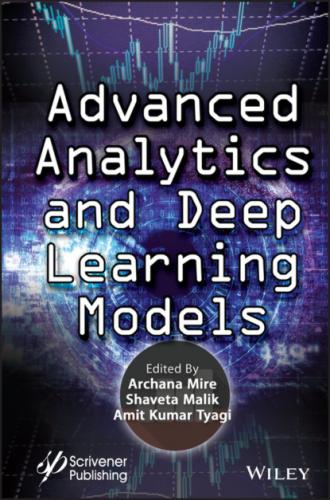5. Kannan, J. and Munday, P., New trends in second language learning and teaching through the lens of ICT, networked learning, and artificial intelligence, in: Vías de transformación en la enseñanza de lenguas con mediación tecnológica. Círculo de Lingüística Aplicada a la Comunicación, vol. 76, Fernández Juncal, C. and Hernández Muñoz, N. (Eds.), p. 13, 2018, http://dx.doi.org/10.5209/CLAC.62495.
6. Davies, G., Walker, R., Rendall, H., Hewer, S., Introduction to new technologies and how they can contribute to language learning and teaching (CALL). Module 1.1, in: Information and Communications Technology for Language Teachers (ICT4LT), G. Davies (Ed.), Thames Valley University, Slough, 2011, http://www.ict4lt.org/en/en_mod1-1.htm.
7. Levy, M., CALL: context and conceptualisation, Oxford: Oxford University Press, New York, 1997.
8. Warschauer, M., CALL for the 21st century. Paper presented at the IATEFL and ESADE Conference, Barcelona, Spain, 2 July, 2000, http://education.uci.edu/uploads/7/2/7/6/72769947/cyberspace.pdf.
9. Davies, G., Otto, S.E., Rüschoff, B., Historical perspectives on CALL, in: Contemporary computer-assisted language learning, p. 19, 2013.
10. Kuddus, K., Web 2.0 Technology in Teaching and Learning English as a Second Language. Int. J. Engl. Lang. Lit., 1, 4, 292, 2013.
11. Dash, A. and Kuddus, K., Leveraging the Benefits of ICT Usage in Teaching of English Language and Literature, in: Smart Intelligent Computing and Applications. Smart Innovation, Systems and Technologies, vol. 160, S. Satapathy, V. Bhateja, J. Mohanty, S. Udgata (Eds.), pp. 225–232, Springer, Singapore, 2020.
12. Chatterjee, B. and Kuddus, K., Mass media Approach to Second Language Acquisition. J. Engl. Stud., 10, 1, 10, 2015.
13. Warschauer, M. and Kern, R., Network-based language teaching: Concepts and practice, Cambridge University Press, New York, 2000.
14. Sharples, M., Taylor, J., Vavoula, G., A theory of learning for the mobile age, in: Medienbildung in neuen Kulturräumen, pp. 87–99, VS Verlag für Sozialwissenschaften, Switzerland, 2010.
15. Jones, C., Networked learning: an educational paradigm for the age of digital networks, Springer, Cham, Switzerland, 2015.
16. Manns, UNESCO, Artificial Intelligence: Opportunities, threats and the future of learning, Asia and Pacific Regional Bureau for Education, UNESCO Bangkok 2017.
17. Goksel, N. and Bozkurt, A., Artificial Intelligence in Education: Current Insights and Future Perspectives, in: Handbook of Research on Learning in the Age of Transhumanism, Sisman-Ugur, S. and Kurubacak, G. (Eds.), p. 224, 2019.
18. Russell, S.J., and Norvig, P., Artificial intelligence, A modern approach, 2nd ed, Pearson Education Inc., Upper Saddle River, New Jersey, 2003.
19. Housman, M., Why ‘augmented intelligence’ is a better way to describe AI, AINews, United Kingdom, 2018, https://www.artificialintelligence-news.com/2018/05/24/why-augmented-intelligence-is-a-betterway-to-describe-ai/.
20. Nabiyev, V.V., Yapay zeka: İnsan bilgisayar etkileşimi, Seçkin Yayıncılık, Ankara, 2012.
21. Nilsson, J., Voice interfaces: Assessing the potential, Nielsen Norman Group, USA, 2003, Retrieved from http://www.useit.com/alertbox/20030127.htm.
22. Self, J., The defining characteristics of intelligent tutoring systems research: ITSs care, precisely. Int. J. Artif. Intell. Educ. (IJAIED), 10, 350, 1998.
23. Steenbergen-Hu, S. and Cooper, H., A meta-analysis of the effectiveness of intelligent tutoring systems on college students’ academic learning. J. Educ. Psychol., 106, 2, 331, 2014.
24. Reiland, R., Is Artificial Intelligence the Key to Personalized Education?, Smithsonian Magazine, Smithsonian Magazine, USA, 2018. https://www.smithsonianmag.com/innovation/artificial-intelligencekey-personalized-education-180963172/, on March 15 2018.
25. Lu, X., Natural Language Processing and Intelligent Computer-Assisted Language Learning (ICALL), The TESOL Encyclopedia of English Language Teaching, USA, 2018.
26. Turovsky, B., Ten years of Google translate, Google Translate Blog, Google, USA, 2016. https://blog.google/products/translate/ten-years-of-google-translate/
27. Turovsky, B., Found in translation: More accurate, fluent sentences in Google Translate, Blog. Google, USA, 15, 2016, https://www.blog.google/products/translate/found-translation-more-accurate-fluentsentences-google-translate/.
28. https://medium.com/@alejandra.riveraUX/adding-a-chat-feature-to-duolingoa-ux-case-study-73175b612120
29. https://images.app.goo.gl/3g7rVCnfyYBBVJZMA
32. https://www.intellias.com/ai-nlp-driven-language-learning-app/
33. Burstein, J., Madnani, N., Sabatini, J., McCaffrey, D., Biggers, K., Dreier, K., Generating Language Activities in Real-Time for English Learners using Language Muse, in: Proceedings of the Fourth ACM Conference on Learning Scale (L@S’17), Association for Computing Machinery, NY, USA, pp. 213–215, 2017, https://dl.acm.org/doi/10.1145/3051457.3053988.
34. Lovett, D., Is Machine Translation a threat to language learning?, The Chronicle of Higher Education, Washington D.C., 2018.
Email: [email protected]
2
Real Estate Price Prediction Using Machine Learning Algorithms
Palak Furia* and Anand Khandare†
Department of Computer Engineering, Thakur College of Engineering and Technology, Mumbai, India
